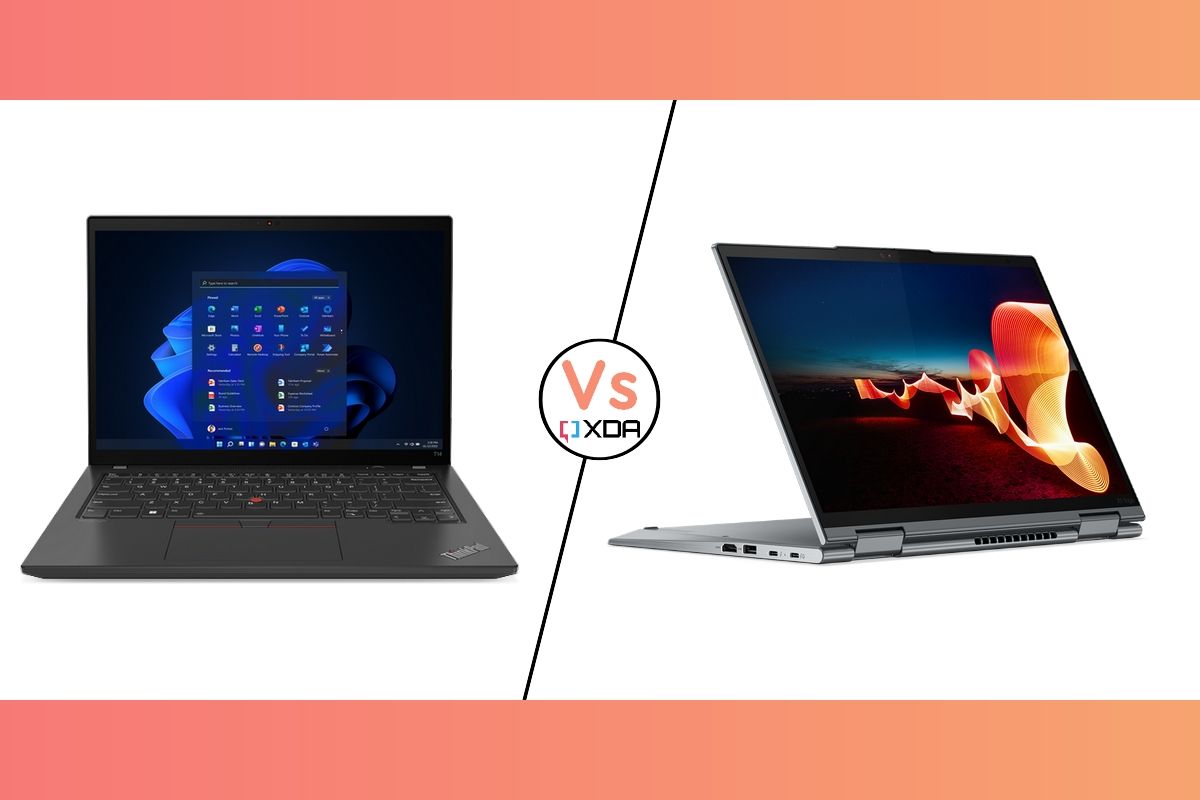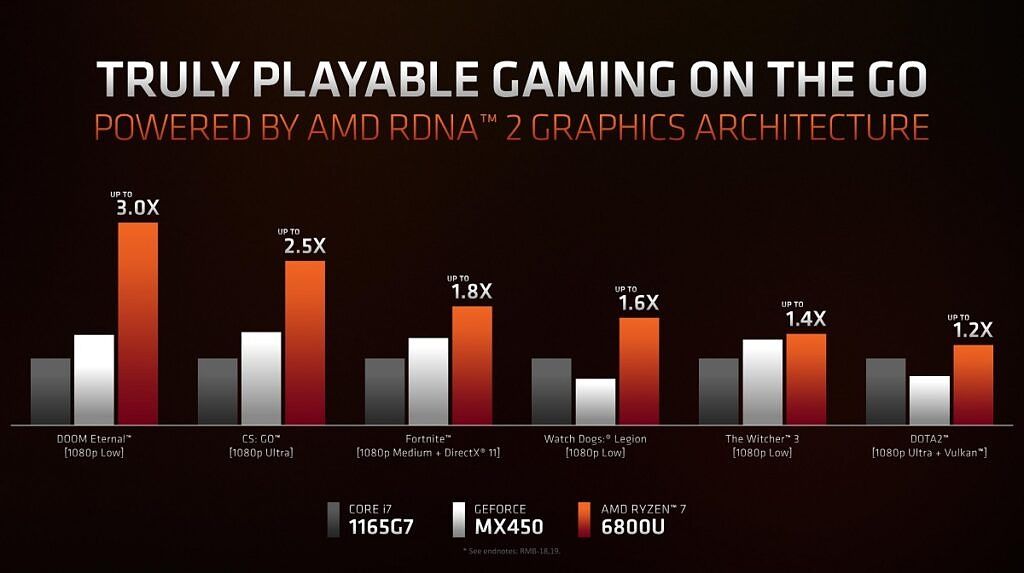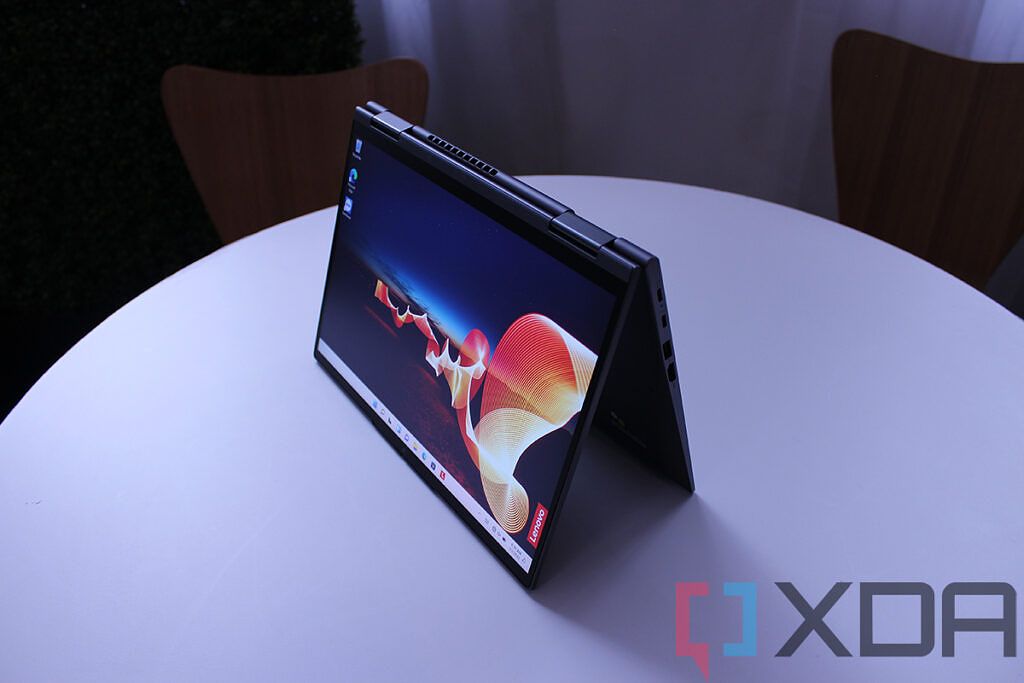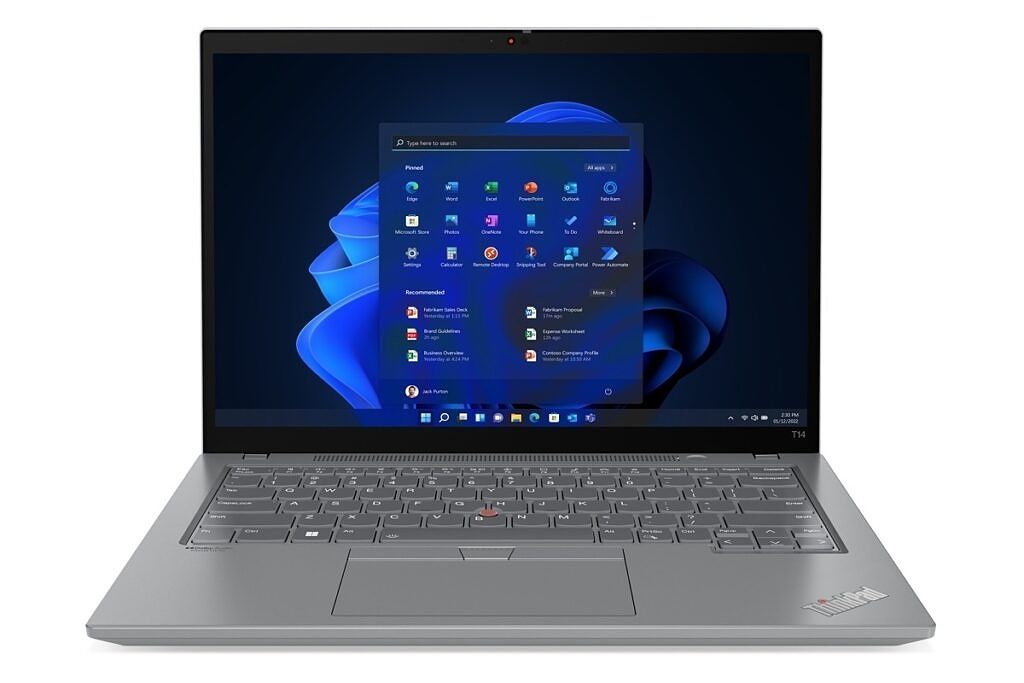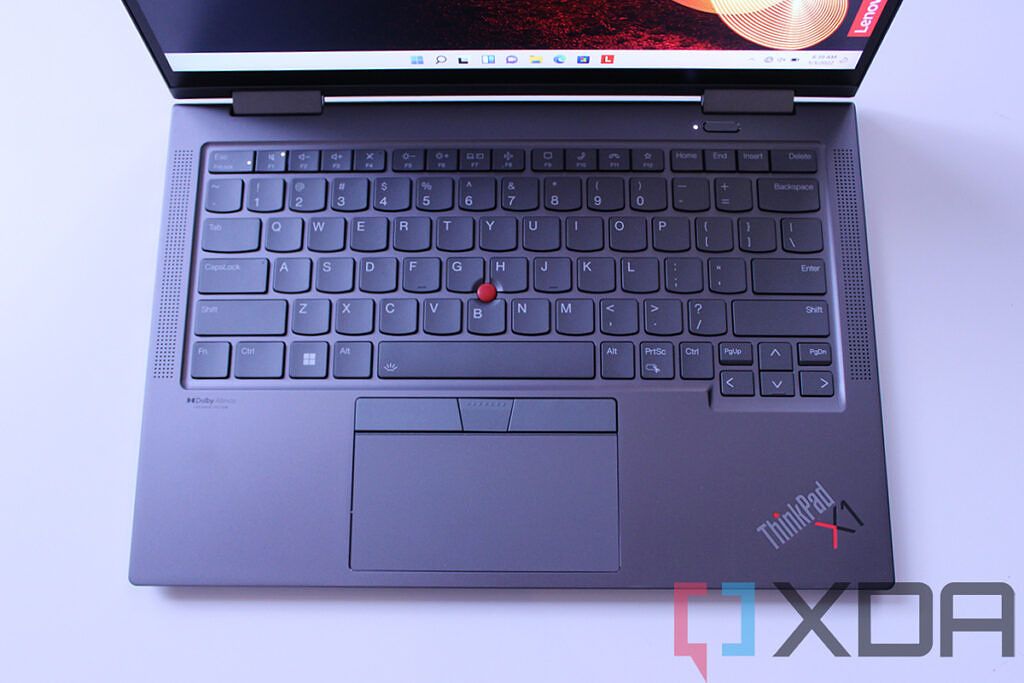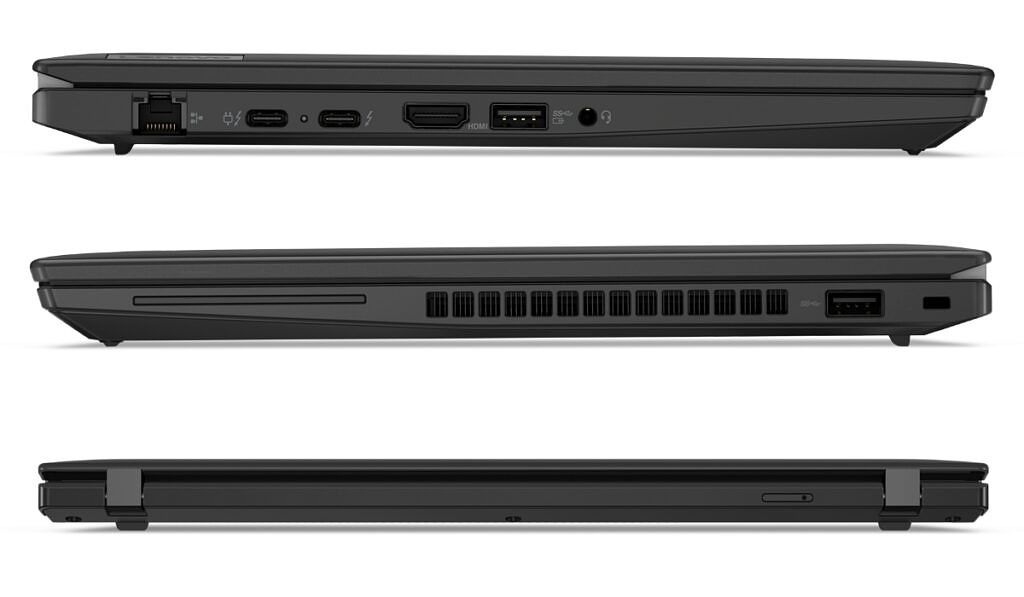Lenovo has already introduced a wide range of laptops it's planning to launch in 2022, and many of them are already available. Among them, the Lenovo ThinkPad T14 Gen 3 and ThinkPad X1 Yoga Gen 7 are two fantastic choices, even if they're geared towards slightly different kinds of users. The Lenovo ThinkPad X1 Yoga Gen 7 is Lenovo's premium business convertible, while the ThinkPad T14 Gen 3 is more of a mainstream device, and it's only a clamshell laptop.
Despite that, they have a lot in common, especially thanks to some of the upgrades Lenovo has made to the ThinkPad T14 this year. They both have a 14-inch display with a 16:10 aspect ratio, they're powered by the latest Intel processors (though the ThinkPad T14 is also available in AMD models), and they naturally have the iconic ThinkPad design language users have come to know and love. So, if you're on the fence between these two, we're here to help. let's take a closer look at what makes each of these laptops unique so you can choose the right one for yourself.
Navigate this article:
Lenovo ThinkPad T14 Gen 3 vs ThinkPad X1 Yoga Gen 7: Specs
|
Lenovo ThinkPad T14 Gen 3 |
Lenovo ThinkPad X1 Yoga Gen 7 |
|
|---|---|---|
|
Operating system |
|
|
|
CPU |
|
|
|
Graphics |
|
|
|
Display |
|
|
|
Storage |
|
|
|
RAM |
|
|
|
Battery |
|
|
|
Ports |
|
|
|
Audio |
|
|
|
Camera |
|
|
|
Windows Hello |
|
|
|
Connectivity |
|
|
|
Color |
|
|
|
Size (WxDxH) |
|
|
|
Dimensions |
Starting at 1.21 kg (2.65 lbs) |
Starts at 1.38kg (3 lbs) |
|
Price |
Starting at $1,299 (AMD) / $1,399 (Intel) |
Starting at $1,749 |
Performance: The latest from Intel and AMD
Starting things off with performance, both of these laptops come with the latest hardware from Intel, with the ThinkPad T14 Gen 3 also offering the option for AMD's latest Ryzen processors. That should mean both of them will perform more than fine enough for most day-to-day tasks, but there are, of course, some differences. The Lenovo ThinkPad X1 Yoga come with Intel's P-series processors, which have a higher 28W. That's the only option, and these are the processors you find on the most premium laptops this year.
The Lenovo ThinkPad T14 Gen 3 also gives you the option for Intel's P-series processors, but Lenovo says there will also be U-series models with a lower 15W TDP. And of course, you can go with AMD processors that have a 20W TDP, which is somewhere in between. Unfortunately, Lenovo hasn't yet revealed the specific SKUs you'll find in the ThinkPad T14, but we can compare the performance of some of the more common SKUs to see how they compare.
|
Intel Core i7-1280P(see test) |
Intel Core i7-1265U(see test) |
AMD Ryzen 7 PRO 6850U(see test) |
|
|---|---|---|---|
|
Geekbench 5 (single/multi-core) |
1,535 / 9,984 |
1,232 / 6,643 |
1,314 / 6,964 |
Of course, we should mention that Geekbench 5 is only a measurement of raw CPU performance and these are early results, so you shouldn't take these as the end-all-be-all measurement of real-life performance, but it gives you an idea of what to expect.
There's also the matter of graphics, and the Lenovo ThinkPad T14 Gen 3 is actually the better choice here. For one thing, the Intel models give you the option to add discrete graphics from NVIDIA, whether that's the GeForce MX550 or the GeForce RTX 2050. These aren't high-end GPUs, but they can handle graphics rendering far better than integrated graphics would, so you can use this laptop for some light gaming or other tasks where a GPU might come in handy. And, if you go with an AMD model, the integrated graphics in the new Ryzen processors have seen a major upgrade, so you're still getting much better performance compared to the Iris Xe GPU built into Intel's processors.
The ThinkPad T14 Gen 3 may also be better for battery life, depending on your configuration. For one thing, it has a physically larger battery, so that's an undeniable advantage, but there's also the fact that you'll be able to get it with a U-series processor that's less power-hungry. You can also go with the AMD models, which have a lower TDP compared to Intel's P-series processors, too. The ThinkPad T14 may have worse battery life if you choose a model with discrete graphics, but that's probably the only situation where that happens.
The ThinkPad T14 Gen 3 may give you better battery life.
Aside from that, the ThinkPad T14 Gen 3 is available with up to 48GB of RAM in the Intel model or 32GB in the AMD model, while the ThinkPad X1 Yoga Gen 7 also maxes out at 32GB. AMD processors support faster memory, so that's a potential advantage for the ThinkPad T14. For storage, both laptops go up to 2TB of PCIe Gen 4 SSD storage.
Display: You can get an OLED panel with the ThinkPad X1 Yoga
Moving on to the display, as we mentioned at the top, both of these laptops have a big benefit - the 16:10 aspect ratio. These displays are taller than your typical laptop, and that does wonders for productivity. Both laptops also start with Full HD+ (1920 x 1200) resolution, but it's the upgrade options that are different.
The ThinkPad X1 can be upgraded with an anti-reflective coating or with a privacy screen to keep sensitive information away from prying eyes. Or, if you want the best image quality possible, you can spring for the Ultra HD+ (3840 x 2400) OLED panel, which looks simply stunning. In addition to the very high resolution, being an OLED means you get true blacks, vivid colors, and very high contrast ratios compared to a typical LCD. This is something the Lenovo ThinkPad T14 Gen 3 just can't match. And of course, because it's a tablet, every configuration has a touchscreen and pen support.
Meanwhile, the ThinkPad T14 Gen 3 also has a bunch of upgrade options from the base model, including the ability to add touch support, a privacy screen, or resolution upgrades. You can go for a slightly sharper 2.2K (2240 x 1400) display or go all the way to an Ultra HD+ option, though, unlike the ThinkPad X1 Yoga, this isn't OLED, it's IPS. It does support touch, though. Either way, the Lenovo ThinkPad X1 Yoga offers the most premium experience, though it's not like you're getting a bad display with the T14.
Above the display, the ThinkPad X1 Yoga is rocking a 1080p webcam by default, a long-overdue upgrade for a premium laptop such as this one. You also have the option to add Windows Hello facial recognition or even opt for the more advanced MIPI camera with Computer Vision, which enables smart features like being able to detect when you're approaching the laptop to use it. Meanwhile, the Lenovo ThinkPad T14 starts with a more basic 720p camera, though you have the option to upgrade to 1080p and add Windows Hello support, too. There's no option for Computer Vision here, though, so the ThinkPad X1 Yoga pulls ahead here.
Both laptops have 1080p webcams, but it's included by default in the X1 Yoga.
For sound, the Lenovo ThinkPad X1 Yoga has a quad-speaker stereo setup with two 2W woofers and two 0.8W tweeters, so it should offer a more premium listening experience compared to ThinkPad T14, which only has a dual-speaker setup. Plus, the ThinkPad X1 Yoga also supports Dolby Atmos. You also get four microphones on the X1 Yoga versus just two on the ThinkPad T14.
Design: The ThinkPad X1 Yoga is smaller and more versatile
The premium nature of a laptop is usually made apparent in the design section, that's also the case here. Compared to the Lenovo ThinkPad T14, the ThinkPad X1 Yoga is smaller in every dimension, including thickness, where it measures just 15.53mm versus the 17.9mm of the ThinkPad T14. This is despite the fact that they have a similar display and specs, so that's certainly impressive.
With that in mind, the ThinkPad X1 Yoga is actually heavier than the ThinkPad T14 - they weigh 3lbs and 2.65lbs, respectively - and that's likely thanks to it being a convertible. Between the more complex hinge design and the more premium glass cover for the display, convertibles are usually heavier than clamshell laptops, so that's not too surprising. In exchange for that extra weight, you're getting a lot more versatility since you can use the X1 Yoga as a tablet, and it even includes a pen built-in for all your note-taking and artistic needs.
As for looks, the two laptops are very much ThinkPads. You can see the iconic red accents and features like the TrackPoint and duplicate mouse buttons above the trackpad in both of them. The most noteworthy difference is that the ThinkPad X1 Yoga is only available in Storm Grey, while the T14 gives you the option for a Thunder Black finish that's more reminiscent of the classic ThinkPads.
Ports and connectivity: The ThinkPad T14 has Ethernet, the X1 Yoga has 5G
Finally, rounding things out with ports, the two laptops are, again, very similar. Both of them have two USB Type-C/Thunderbolt 4 ports, two USB Type-A ports, HDMI, a headphone jack, and an optional SIM card slot. There's a big caveat here for AMD versions of the ThinkPad T14, though, since you don't get Thunderbolt support in the USB-C ports. They only support regular USB 3.2 Gen 2 speeds, so they're far less useful. With Thunderbolt, you can connect multiple external monitors and even things like an external GPU using a single port, and standard USB ports aren't as capable.
One thing the ThinkPad T114 has going for it is an RJ45 Ethernet port, which is missing from the X1 Yoga. Wired internet connections are often faster and more stable than Wi-Fi, so many might enjoy having the option to use it.
Both laptops support cellular, but the ThinkPad T14 only has 4G LTE.
As for wireless connectivity, the two laptops support Wi-Fi 6E, Bluetooth 5.2, and cellular connectivity. The main difference here is that the ThinkPad X1 Yoga will be available with a 5G model in the future, so you can be ready for higher speeds and lower latency, especially in the future. We say it will be available because, at writing time, both laptops only give you the option for 4G LTE.
Final thoughts and pricing
Having taken a look at all of these factors, it's apparent that the Lenovo ThinkPad X1 Yoga Gen 7 is a more premium laptop than the ThinkPad T14 Gen 3, but that shouldn't surprise you. The important thing to remember here is that the Lenovo ThinkPad T14 Gen 3 starts at $1,299 for the AMD version, or $1,399 for the Intel version. Meanwhile, the ThinkPad X1 Yoga starts at a whopping $1,749.
Given that difference in the starting price, of course you can expect things like a better webcam, a more compact chassis, a convertible form factor, and more premium display options. If you want to get a top-notch experience and you have the money to spend, the Lenovo ThinkPad X1 Yoga is definitely the one to go for here.
But if you step down to the Lenovo ThinkPad T14, you're still getting a powerful laptop with fast processors and lots of configuration options that aren't that far from what you get with the X1 Yoga. You can still get an Ultra HD+ display with touch support, a Full HD webcam, and Windows Hello facial recognition. It's not on the same level, but if you just need a reliable and performant laptop, this is a great option.
At the end of the day, you can't go wrong with either of these, it just depends on your budget and needs. The ThinkPad X1 Yoga may be better, but you have to ask yourself if it's worth the price difference to you. You can buy either the Lenovo ThinkPad X1 Yoga Gen 7 or the ThinkPad T14 Gen 3 using the links below - but keep in mind the AMD model of the T14 isn't available yet at writing time. Otherwise, you can check out our roundup of the best ThinkPads to find some other options.
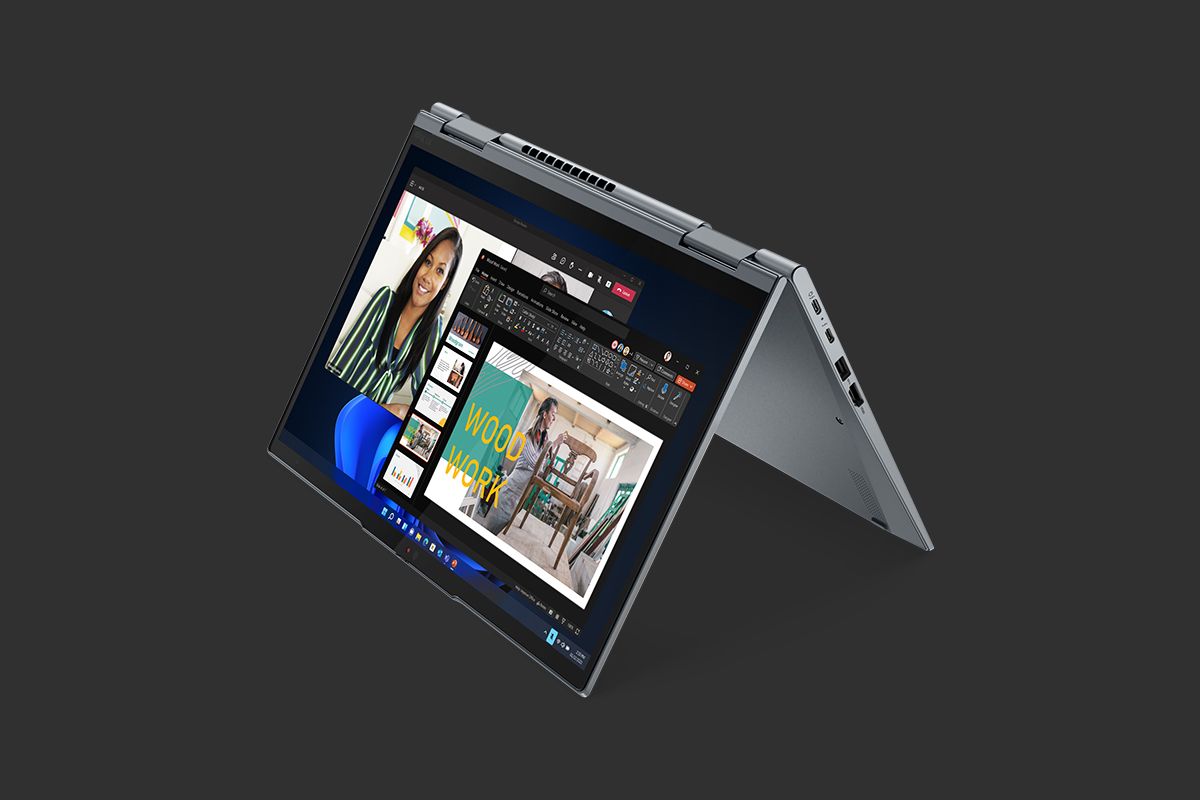
Lenovo ThinkPad X1 Yoga Gen 7
The Lenovo ThinkPad X1 Yoga Gen 7 is a powerful convertible with 12th-gen Intel processors and up to an Ultra HD+ OLED display. You can also get 5G connectivity and more in a relatively thin design.
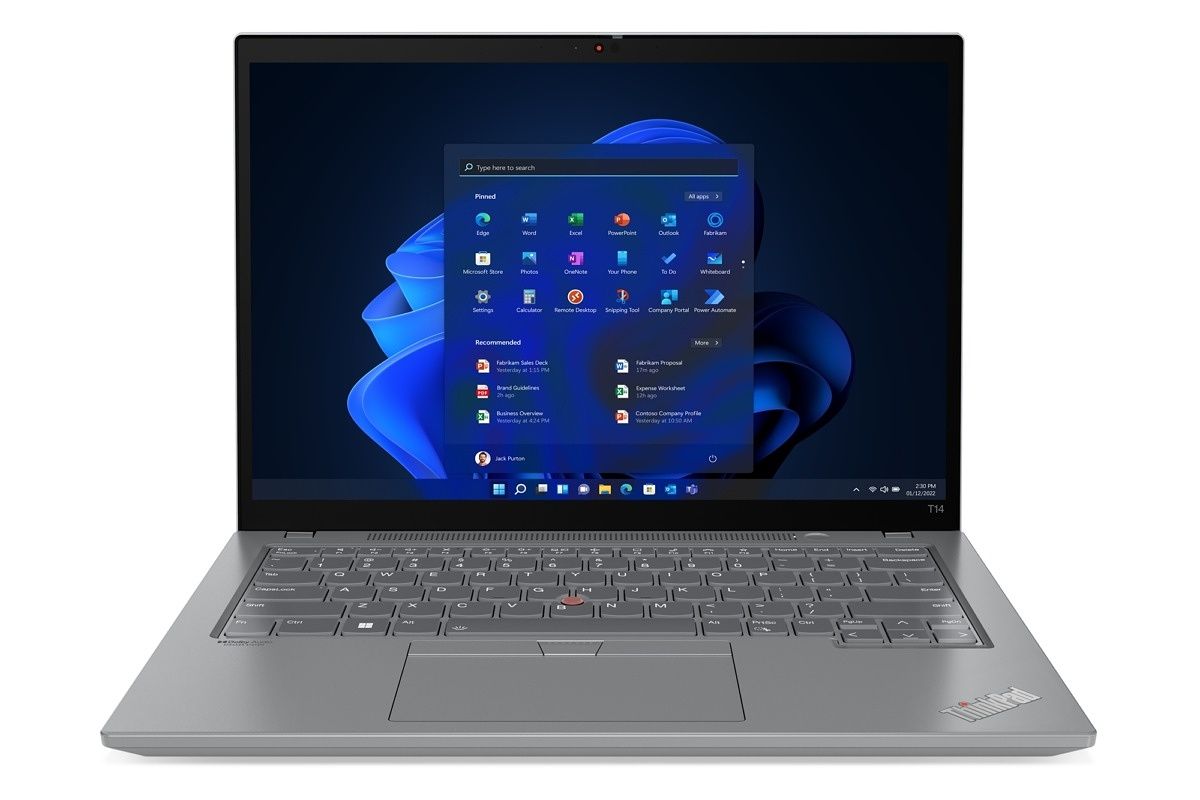
Lenovo ThinkPad T14 Gen 3
The Lenovo ThinkPad T14 Gen 3 is a business laptop powered by Intel 12th-gen or AMD Ryzen 6000 processors. It has a 16:10 display, lots of ports, and it nails all the basics for businesses.

